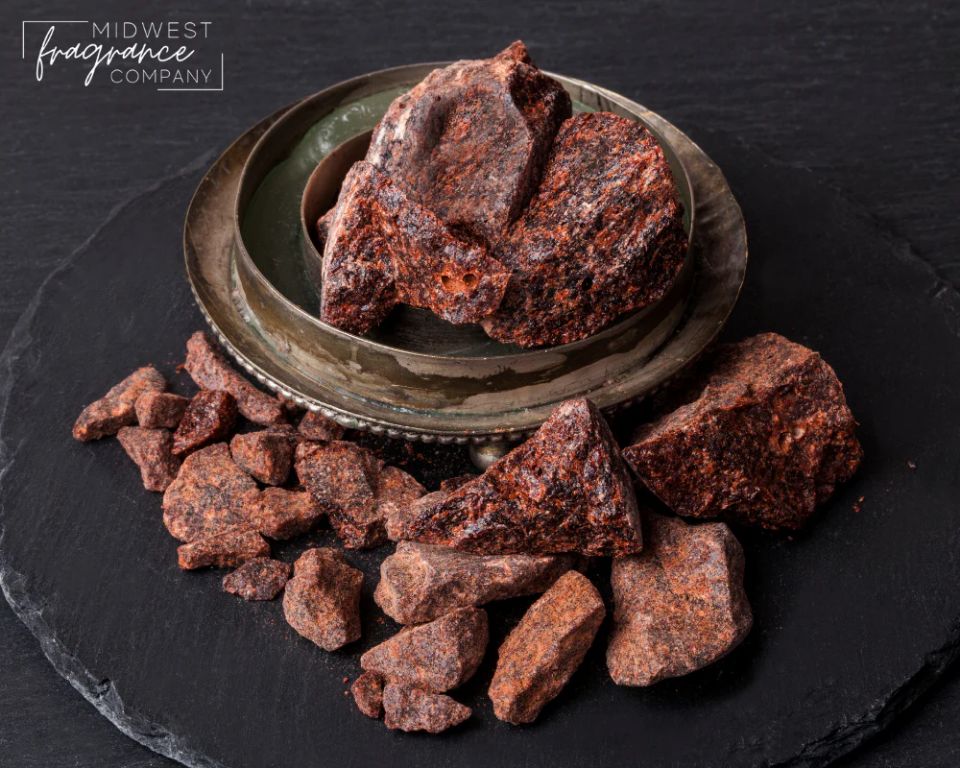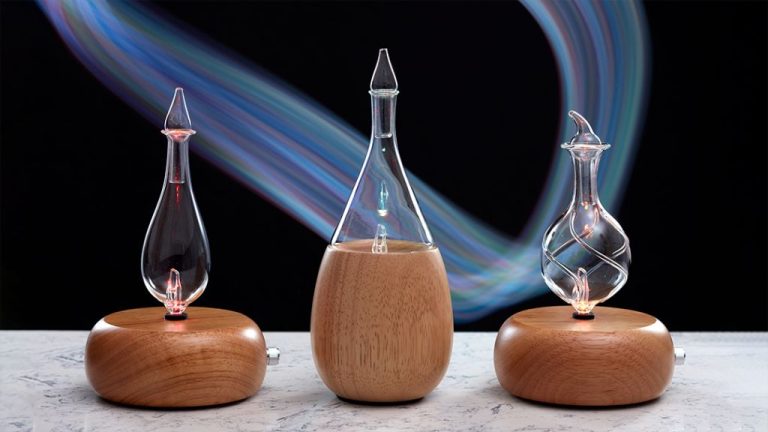What Is Dragon’S Blood Fragrance Used For?
What is Dragon’s Blood?
Dragon’s blood is a deep red resinous fragrance obtained from a variety of plants. The most common sources are species of Dracaena, Daemonorops, Croton, and Pterocarpus. These plants grow in tropical areas across Africa, Asia, South America, and the Caribbean islands.
Dragon’s blood has a long history of use dating back to ancient times. Many ancient cultures prized it as a pigment, medicine, and incense. The name comes from the deep red color, which was associated with dragon’s blood in medieval legend. Traditionally people harvested dragon’s blood resins by cutting or stripping bark from the plants.
Today most commercial production comes from plantations, mainly in eastern Asia and Indonesia. Workers tap the stems and collect the sap. They process it into solid chunks or powders. The quality and color of the resin depends on the plant source and processing method. High quality dragon’s blood has a deep, rich crimson color and semi-transparent appearance.
Traditional Uses
Dragon’s Blood has been used for centuries in traditional medicine and spiritual practices around the world. Some of the main traditional uses include:
Medicinal uses: Dragon’s Blood resin has a long history in folk medicine and herbalism. It was used as an antiseptic for wounds, an aid for gastrointestinal issues, and to promote cardiovascular health (Dragon’s Blood Premium Incense Sticks).
Spiritual uses: In many spiritual traditions, Dragon’s Blood is burned as incense during rituals and ceremonies. It’s thought to have cleansing and protective properties, and to promote healing and manifestation (Dragon’s Blood Premium Incense Sticks).
Decorative uses: The deep red resin has long been used in artisan crafts. It can be used to tint varnishes, wood stains, oils, waxes, and more. The striking color was popular for ornamental boxes, jewelry, and decorative objects (Dragon’s Blood Premium Incense Sticks).
Modern Applications
Dragon’s blood resin continues to be used in several industries today. Its rich red color and aromatic scent make it useful for the following applications:
In the fragrance industry, dragon’s blood essential oil is used as an exotic scent in perfumes, soaps, and incense. Its warm, earthy aroma provides depth and complexity to fragrance compositions (source).

For incense, dragon’s blood resin is combined with other natural ingredients to produce cones, sticks, and powders that give off an intense, sweet smoke when burned. It is commonly used in ritualistic or spiritual incense (source).
As a dye, dragon’s blood has a striking crimson color perfect for tinting wood, bone, horn, bamboo, and other materials. It creates a rich, permanent stain valued in artisanal crafts (source).
For varnish, dragon’s blood was traditionally dissolved in alcohol to produce a protective, resinous coating. It provides a glossy red finish for musical instruments, furniture, and more (source).
Fragrance Properties
Dragon’s Blood has a very distinctive fragrance profile. It has a warm, earthy aroma with sweet and spicy notes. The fragrance is often described as incense-like. It has a rich, complex scent that is quite intense. The fragrance also has strong lasting power and longevity on the skin and in perfumes or incense. According to one source, “Dragon’s Blood fragrance properties include clearing negative energies, grounding, and extraordinarily powerful protector against negativity and lower vibrational energies.” (Source)
The sweet, resinous scent of Dragon’s Blood is what makes it such a popular fragrance note. It has a bold, exotic aroma that is quite unforgettable. The intensity and staying power of the fragrance means it retains its scent when blended with other fragrance notes or used in incense. The complex blend of earthy, spicy and sweet makes Dragon’s Blood a versatile fragrance ingredient.
Pairing Dragon’s Blood
Dragon’s Blood has a rich, earthy, slightly spicy scent that layers beautifully with other fragrances. Some of the most complementary essential oils and fragrances include:
- Vanilla – The sweet vanilla perfectly balances the exotic Dragon’s Blood. Blend with vanilla essential oil or fragrance oil (Source: Reddit).
- Amber – Amber accentuates the warm, resinous notes in Dragon’s Blood. The two pair together seamlessly (Source: WholesaleSuppliesPlus).
- Sandalwood – The rich, woody aroma of sandalwood enhances the earthiness of Dragon’s Blood. Combining the two creates an mystical, ancient scent (Source: WholesaleSuppliesPlus).
Experiment with layering Dragon’s Blood with different scent families like spices (cinnamon, cardamom), woods (cedarwood, pine), and berries (raspberry, blackberry). The complexity of Dragon’s Blood allows it to blend seamlessly with many fragrances.
Using Dragon’s Blood
Dragon’s Blood has become a popular fragrance note for a variety of applications. Here are some of the main ways Dragon’s Blood fragrance oil can be used:
Diffusing
Dragon’s Blood has a rich, exotic scent that makes it an ideal fragrance to diffuse. Adding a few drops to an aromatherapy diffuser or nebulizing diffuser can help fill a room with its warm, spicy aroma. Diffusing Dragon’s Blood is thought to promote feelings of strength, courage and vitality.
Mixing into Products
Dragon’s Blood fragrance is commonly added to body products like lotions, creams, bath bombs, and soap. At a 3-5% dilution rate, it mixes well into oil-based products like body butters or bath melts. The rich scent blooms beautifully in cold process soap recipes
Direct Application
Dragon’s Blood can be applied topically when diluted properly. Mix 6-8 drops per ounce of carrier oil like jojoba, sweet almond or coconut oil. This can be massaged into the skin or added to baths. Use caution and test a small area first when applying any fragrance oil directly to skin.
Fragrance Crafts
Dragon’s blood has long been used to create aromatic products like incense and scented candles. The deep, earthy aroma lends itself well to crafts and homemade beauty products.
Dragon’s blood incense is popular for its mystical, smoky scent. The resin can be mixed with other natural ingredients like frankincense, myrrh and cinnamon to create custom incense blends. It burns slowly and evenly, producing a calming fragrance.
For candles, dragon’s blood essential oil or fragrance oil is added to soy, beeswax or paraffin wax. The scent throws well and fills a room as the candle burns. Pair it with complementary scents like vanilla, amber or sandalwood for a unique aromatic experience.
In bath products like soaps and bath bombs, dragon’s blood provides an earthy, exotic feel. It blends well with oriental, spicy and floral notes. Add the essential oil or fragrance oil to melt and pour soap bases, bath bomb recipes and bath salts.
Cautions
When using Dragon’s Blood fragrance, it’s important to be aware of some potential cautions.
Dragon’s Blood contains ingredients like cinnamon leaf oil and clove bud oil which can cause skin sensitivity or irritation for some people. It’s a good idea to do a patch test on a small area of skin before using this fragrance regularly, especially when applied directly to the skin in products like lotions or soaps.
There are also some sustainability concerns around resources like dragon’s blood resin, which is harvested from trees. Overharvesting of the trees that produce this resin can damage fragile ecosystems in places like Latin America and Asia where it is commonly sourced. When buying dragon’s blood products, look for information about ethical and sustainable harvesting practices.
Quality can also vary substantially between dragon’s blood fragrance oils. Look for reputable suppliers that provide information on ingredients and safety testing. Avoid exaggerated claims about the fragrance’s effects or origins. High quality dragon’s blood should have an rich, complex scent with depth from resins, spices, and floral notes. Diluting or adulterating with synthetic chemicals reduces the fragrance quality.
Purchasing Dragon’s Blood
If you’re interested in using dragon’s blood as a fragrance, you’ll need to find a reputable supplier that offers high-quality products. There are a few things to keep in mind when shopping for dragon’s blood:
Look for companies that specialize in incense, essential oils, or fragrance ingredients. These suppliers are more likely to carry pure, natural dragon’s blood resin than general retailers.
Search for dragon’s blood in resin form, as an essential oil, or as an incense blend. Resin chips or powder will provide the purest scent. The oil makes it easy to add dragon’s blood to cosmetics or homemade beauty products. Incense sticks, cones, or smoldering blends containing dragon’s blood are also readily available.
Expect to pay $5 to $20 for a 1-ounce bag or bottle of dragon’s blood, depending on the form and brand. Rare, high-demand varieties may cost more. Buying in bulk usually offers significant savings.
No matter where you purchase from, inspect packaging and product descriptions closely. Pure, natural dragon’s blood will always list the botanical name (Daemonorops draco or Dracaena cinnabari). Stay away from products that use vague terms or don’t disclose ingredients.
With an eye for quality and some smart shopping, you can find excellent dragon’s blood fragrance products for your homemade crafts, beauty recipes, or metaphysical rituals.
Similar Fragrances
Dragon’s Blood has a rich, spicy, sweet scent that is often compared to other resinous fragrances like frankincense, myrrh, and benzoin. These fragrances share aromatic compounds that give them their distinctive scents.
Frankincense is an ancient resin derived from trees in the Boswellia genus. Like Dragon’s Blood, frankincense has a sweet, woody aroma. It is often used in incense and perfumes. The main active compound in frankincense is boswellic acid, which gives it anti-inflammatory properties. Frankincense essential oil is commonly used in aromatherapy.
Myrrh is another resin that comes from shrub-like trees in the Commiphora genus. It has an earthy, balsamic fragrance that is slightly medicinal. Myrrh contains terpenoids like furanoeudesma-1,3-diene which give it its unique scent profile. It has been used for millennia in traditional medicine and religious rituals.
Benzoin is a balsamic resin derived from the bark of trees in the Styrax genus. Its warm, sweet vanilla-like aroma makes it a popular component of incense. Main fragrance components like cinnamic acid and vanillin contribute to benzoin’s rich scent. Like the other resins, benzoin resin has been used since ancient times.
While not identical, these resinous fragrances share many similar properties with Dragon’s Blood. People who enjoy the complex scent of Dragon’s Blood often also appreciate the woody, balsamic notes of frankincense, myrrh and benzoin.



